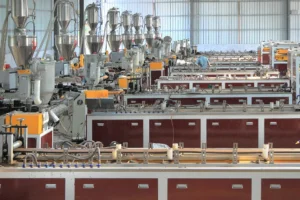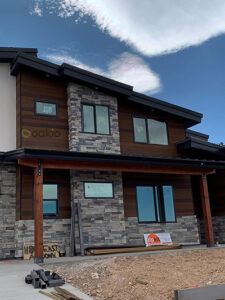High-Value Flame-Retardant WPC Composite Materials
WPC (Wood-Plastic Composite) materials are recognized as eco-friendly solutions with advantages such as resistance to strong acids and alkalis, exceptional mechanical properties, abrasion resistance, environmental durability, aging resistance, dimensional stability, low cost, and abundant availability. These characteristics make WPC composites widely used in furniture, packaging, window frames, and automotive interiors.
The Limits of Traditional WPC
However, traditional WPC composites, primarily made with polyethylene (PE) or polypropylene (PP) as their base polymers, present certain challenges. The low thermal conductivity, high heat capacity, and high emissivity of thermoplastic polymers significantly increase fire hazards. Additionally, the capillary effect of natural fibers within the composites accelerates the spread of flames, potentially resulting in severe burns during fires. These inherent limitations restrict the use of WPC composites in fields with stringent safety requirements, necessitating the development of advanced flame-retardant WPC materials with superior fire-resistance performance.

Addressing Electromagnetic Wave and Microbial Threats
In modern society, the increasing prevalence of electronic devices has brought about concerns regarding electromagnetic wave (EMW) exposure. EMWs pose risks to the central nervous system, immune system, and cardiovascular health. Furthermore, microbial contamination is a growing issue, particularly in poorly ventilated environments that foster high microbial concentrations. Excessive microbial presence can lead to mold growth, unpleasant odors, and environmental pollution in living spaces, including household materials.
Thus, the development of advanced shielding and antimicrobial materials is critical to enhance human health and living conditions.
Recycling Optical Discs for High-Performance WPC
Optical discs, a hallmark of the 21st-century information era, are extensively produced and consumed in China. The current disposal methods for discarded optical discs—incineration or landfill—waste valuable resources and contribute to environmental pollution. Key components of optical discs, such as the reflective metal layer and polycarbonate (PC) base layer, hold significant potential for reuse.

Research indicates that PC-based materials offer inherent flame retardancy, abrasion resistance, and antioxidation properties. The reflective metal layer, predominantly comprising silver (Ag) and copper (Cu), holds high value due to its excellent electrical conductivity, which can significantly enhance the electromagnetic shielding performance of composites. Additionally, Ag and Cu ions possess natural antimicrobial properties.
The Benefits of Recycling Optical Discs for WPC
By utilizing recycled optical discs to produce WPC composites, it is possible to:
- Promote resource recovery and alleviate environmental stress.
- Improve the shielding, flame-retardant, and antimicrobial properties of WPC materials.
- Add significant value to the final composite products.
- Incorporating Biomass for Enhanced Properties
The incorporation of oak biomass materials in composite production further enhances the value of WPC materials. These biomass-based additives offer properties such as light weight, high conductivity, large specific surface area, rich porous structures, and stable chemical characteristics. These features contribute to improving the composite’s overall performance, particularly in terms of flame resistance, shielding efficiency, and antimicrobial capabilities, thereby increasing the added value of WPC products.
By leveraging recycled optical discs and biomass materials, WPC composites can achieve greater functionality and sustainability, marking a significant advancement in the development of eco-friendly, high-performance materials for various applications.
Trending Reading
What Are the Differences Between the WPC Board and PVC Board?
[2024 Update] How Long Does WPC Decking Last?











